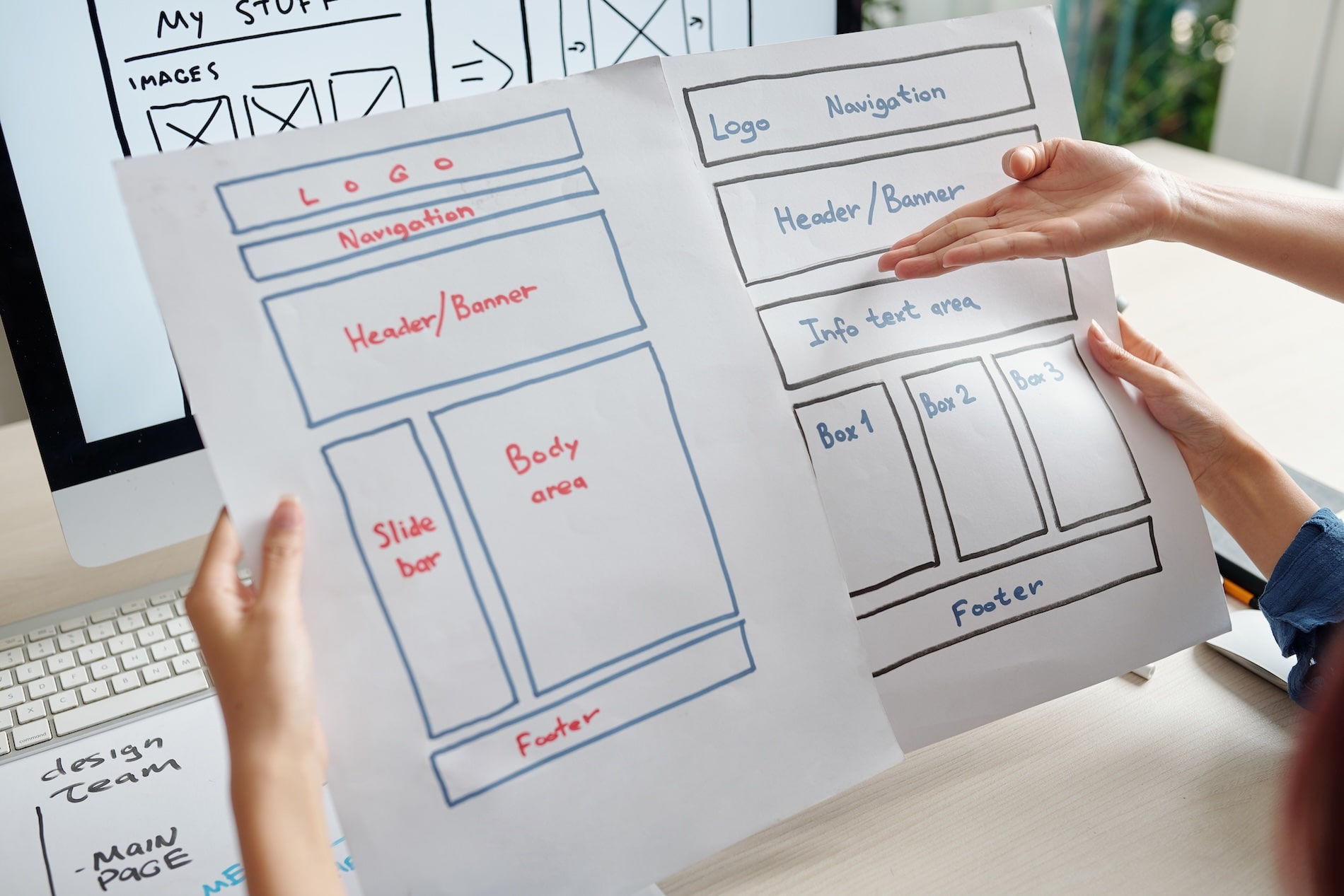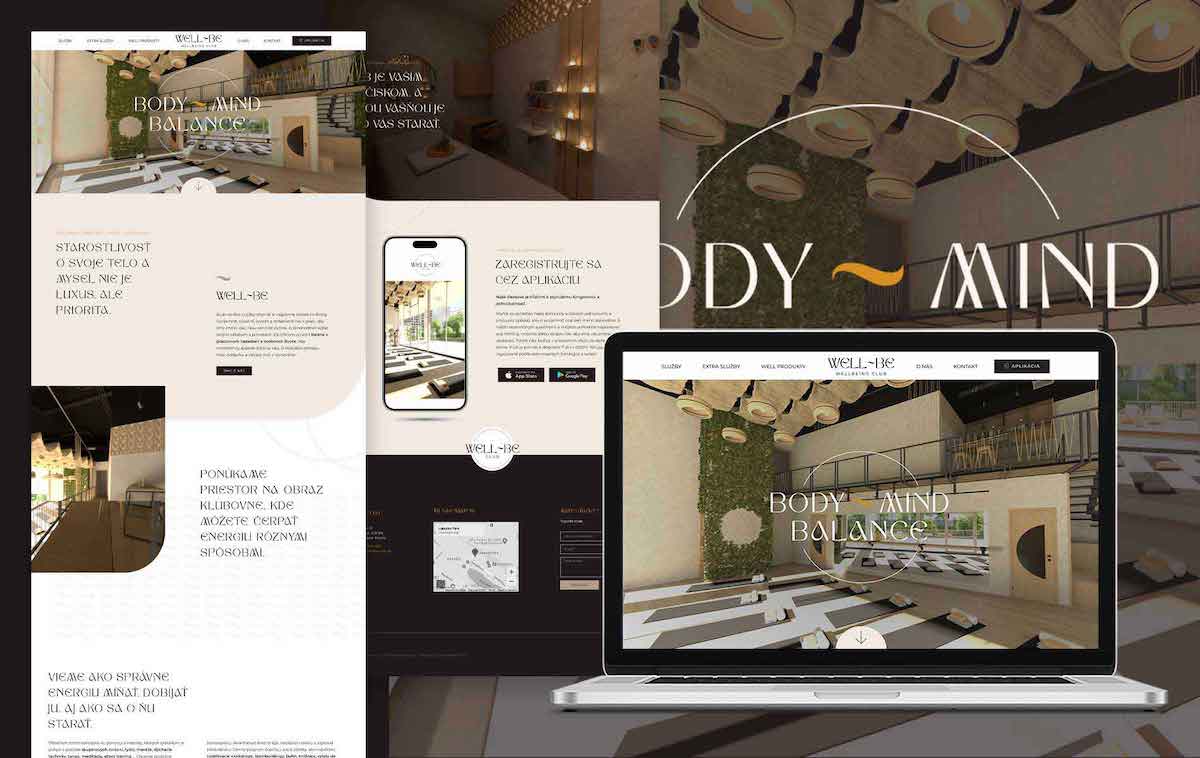How Homepage Design Best Practices Drive Conversions
If your homepage doesn’t capture attention, communicate value, and create trust within five seconds, you’ve already lost the battle for your visitor’s attention. In an online world where competition is fierce and users are constantly distracted, homepage design best practices are not about decoration. They are about persuasion, performance, and conversion.
Your homepage is the digital equivalent of a storefront window. When someone walks past a brick-and-mortar shop, they glance at the window and instantly decide whether to step inside or keep walking. The same decision happens online—only faster. The majority of visitors decide whether to stay on your website or leave within seconds. That means your homepage has one job: to make those seconds count.
In this article, we are going to walk through the homepage design best practices we use at Idea Marketing to help businesses turn clicks into clients. You will see what works, what to avoid, and how to evaluate your own homepage with the same lens we use when we redesign websites for local businesses and eCommerce brands across Canada and beyond.

Why the First 5 Seconds Matter
Every business owner has heard the saying, “You never get a second chance to make a first impression.” On the web, that impression is formed in less than five seconds. Visitors don’t arrive on your homepage ready to read paragraphs of text or scroll endlessly. They arrive with a simple question in mind: am I in the right place?
If the headline is unclear, if the visuals feel generic, or if the page loads too slowly, they make a split-second decision to leave. Most of the time, you’ll never even know they came. They don’t send feedback. They don’t fill out a form saying “I didn’t understand what you do.” They simply vanish.
Passing the five-second test is one of the most important homepage design best practices you can follow. It means your homepage immediately answers three things:
-
What do you do?
-
Who is it for?
-
Why should I trust you?
If those answers aren’t obvious, you lose the opportunity before it ever begins. That is why homepage design best practices start with clarity, not creativity.
Core Homepage Design Best Practices
After designing and redesigning hundreds of website homepages, we’ve found that successful sites consistently follow the same core principles. These are not opinions or abstract theories, they are based on real-world performance data and user behavior studies.
1. Prioritize Clarity Above All Else
The single biggest mistake businesses make is using vague headlines or clever slogans instead of clear, direct language. Your homepage headline is not the place for mystery. It is the place for clarity.
If you run a local accounting firm, the first line on your homepage should say something like: “Professional Accounting and Tax Services for Small Businesses in Vancouver.” If you build websites for eCommerce, your headline should read: “Conversion-Focused Web Design for Growing Online Stores.” These statements are not poetic, but they are powerful because they remove all doubt.
Visitors should not need to guess what you do. They should know within seconds. Supporting subheadlines can expand on benefits, but the hero headline must carry the weight of clarity.
When we redesigned Chilliwack Endodontics’ homepage, the original headline was vague and generic. We replaced it with “Specialist Root Canal Care in Chilliwack.” That one change made the purpose of the site unmistakable. The result was an 83 percent increase in conversions within the first month. That is the difference clarity makes, and it’s why it remains a cornerstone of homepage design best practices.
2. Build Instant Trust
Design is not just about beauty; it is about credibility. Research from Stanford shows that 75% of users judge a company’s credibility based on website design. That means people decide whether to take you seriously before they read your story, your case studies, or your service descriptions.
Trust is communicated through details. High-quality imagery shows that you invest in your brand. Consistent typography and balanced spacing create professionalism. Testimonials, case studies, and recognizable client logos serve as social proof. Even small things, correct spelling, aligned buttons, clean spacing, signal whether your business pays attention to detail.
Think about your own habits. If you land on a site that looks outdated, cluttered, or filled with stock photos you’ve seen a hundred times, you feel doubt. If you land on a site with modern design, authentic photos, and proof of happy clients, you feel confidence. That gut reaction determines whether you keep scrolling or close the tab.
The best practice is to treat your homepage like your handshake. It should be firm, confident, and memorable. When visitors sense trust immediately, they give you permission to guide them deeper into your world.
3. Guide the User’s Next Move
Your homepage is not a buffet of choices. It is the beginning of a conversion journey. Too many businesses overwhelm users with dozens of links, multiple call-to-actions, and cluttered navigation menus. When everything is important, nothing stands out.
Instead, the best practice is to decide what you want visitors to do and then guide them toward that action. For many service-based businesses, the primary action is booking a consultation or strategy call. For eCommerce sites, it might be browsing the shop or exploring a featured collection. Whatever it is, make that action obvious.
The primary call-to-action should appear in your hero section, repeat again mid-page, and appear once more at the bottom. The language should be direct and benefit-driven. Instead of “Learn More,” use “Book Your Free Website Strategy Call” or “Get My Custom Redesign Plan.”
Studies have shown that simplifying navigation and focusing on a single call-to-action can increase conversions by over 200 percent.

4. Reflect the Visitor’s Identity
Great homepage design makes visitors feel understood. Instead of talking about your company, your homepage should reflect your customer’s goals, challenges, and desires.
That means writing copy in their language, not yours. It means emphasizing benefits over features, and showing proof from clients who look and sound like them.
That means writing copy in their language, not yours. It means emphasizing benefits over features. It means showing proof from clients who look and sound like them. For an eCommerce founder, seeing testimonials from other growing online stores builds trust. For a local business owner, seeing photos of other entrepreneurs in their community creates a sense of belonging.
This principle goes beyond words. Imagery should reflect the customer’s world, not abstract stock photos. When the homepage mirrors the visitor’s reality, the connection feels authentic. Of all homepage design best practices, this one is often the most overlooked, yet it may be the most powerful. A homepage that reflects the visitor’s identity immediately creates an emotional connection that makes conversion much more likely.

5. Optimize for Speed and Mobile
None of the best practices above matter if your homepage takes too long to load. In a world where nearly two-thirds of web traffic comes from mobile devices, performance is not optional.
Research shows that almost half of users expect a site to load in under two seconds. More than half of mobile users abandon sites that load slowly. Google’s Core Web Vitals (which measure things like load speed, visual stability, and interactivity) now directly impact your search rankings.
Research shows that:
-
47% of users expect a site to load in under two seconds
-
53% of mobile users abandon sites that load slowly
-
Google now measures speed via Core Web Vitals, which impacts SEO rankings
The best practices here are straightforward: compress your images, use lightweight themes, enable caching, and avoid unnecessary scripts. Design mobile-first, ensuring buttons are large enough to tap easily and layouts adapt seamlessly across devices. A slow or clunky homepage not only costs you visitors, it also hurts your SEO.
This is why homepage design best practices always include technical performance as a priority. Design and content matter, but speed and responsiveness are equally critical to conversion.
Essential Content Blocks for Every Homepage
Following homepage design best practices also means including the right content blocks. At a minimum, every homepage should feature:
- A hero section with a clear headline, subheadline, and primary call-to-action.
- A concise value proposition that explains what makes you different.
- Proof elements such as testimonials, reviews, or case studies.
- A service snapshot that links to your core offerings.
- Trust signals such as certifications, awards, or client logos.
- Repeated calls-to-action throughout the page.
- A footer with navigation, contact information, and any secondary links.
These elements together create a homepage that feels complete and intentional, guiding visitors naturally from awareness to action. Without them, your site risks feeling unfinished or confusing. This checklist is at the heart of homepage design best practices.

DIY Builders vs Custom Builds: A Comparison
Many business owners ask whether they should use a do-it-yourself website builder or invest in a custom-built website. The answer depends on your goals, budget, and growth plans.
| Factor | DIY Builder | Custom Build |
| Cost | Low upfront, ongoing monthly fees | Higher upfront, better long-term ROI |
| Ease of Setup | Drag-and-drop, no coding required | Designed and developed by experts |
| Flexibility | Limited templates and customization | Fully tailored to your business |
| Performance | Often slower, less optimized | Built for speed and SEO |
| SEO Control | Basic tools | Advanced, with full technical SEO |
| Scalability | Hard to scale as you grow | Built to adapt and integrate |
DIY builders like Wix or Squarespace can be useful for hobby sites or very small businesses just starting out. But for businesses that rely on their website to generate leads or drive sales, custom website design pays for themselves through higher performance, stronger SEO, and better conversions. This comparison highlights a critical decision point in homepage design best practices: choosing the right platform for your long-term goals.
Real-World Case: Chilliwack Endodontics
Chilliwack Endodontics came to us with a homepage that looked professional but lacked clarity. Their headline was vague, their imagery was generic, and their call-to-action was buried. Visitors were arriving but not converting.
We redesigned the homepage with three key changes.
- We rewrote the headline to be specific: “Certified Chilliwack Endodontics Specialist”.
- We added trust elements including authentic imagery and recognizable client proof.
- We simplified the navigation and emphasized one primary call-to-action.
- We also optimised pages for the right keywords.
The impact was dramatic. Within 30 days, conversions increased by 63 percent. That is the difference a clear, trustworthy, strategically designed homepage makes. Case studies like this illustrate why homepage design best practices are not theory, they are measurable, real-world strategies that deliver results.
The 5-Second Homepage Audit Checklist
Want to know if your homepage passes the test? Run this quick audit.
- Does your headline clearly state what you do and who it’s for?
- Is there one obvious call-to-action visible without scrolling?
- Does your design look modern, professional, and consistent?
- Are there visible proof elements such as testimonials or logos?
- Does your homepage load in under 2.5 seconds?
- Can a new visitor understand your value in five seconds or less?
This simple framework is one of the most practical homepage design best practices you can implement immediately. If you cannot answer yes to all of these, your homepage is costing you leads and revenue.

Common Mistakes and Myths
Businesses often sabotage their own homepage by following trends instead of best practices. Avoid these mistakes:
- Using rotating sliders or carousels that hide your main message.
- Offering too many choices or vague “learn more” buttons.
- Relying heavily on stock images that feel impersonal.
- Overloading the design with animations or parallax effects.
- Ignoring mobile performance or search optimization.
Good homepage design is not about gimmicks. It is about guiding real people toward real action. This is why the most effective homepage design best practices are surprisingly simple: clarity, trust, direction, empathy, and speed.
Final Thoughts: Homepage Design That Converts
Homepage design best practices are not a list of nice-to-have ideas. They are the foundation of online success. Your homepage is the first handshake your business offers to the world. If it is weak, confusing, or slow, visitors walk away. If it is clear, trustworthy, and strategically designed, it opens the door to relationships, leads, and growth.
If your current homepage feels generic, cluttered, or outdated, you are not alone. Many businesses invest in a website once and then let it sit unchanged for years. The truth is that design standards, user behavior, and search engine expectations evolve constantly. Keeping your homepage current is not just a design choice; it is a business decision.
At Idea Marketing, we help local businesses and eCommerce brands build homepages that convert. From custom WordPress development to full website redesigns, we focus on clarity, trust, speed, and results.
If you want more qualified leads, stronger conversions, and a homepage that passes the five-second test, it is time to take action. Book your free website strategy call today and let’s transform your homepage into a high-performing digital storefront.
